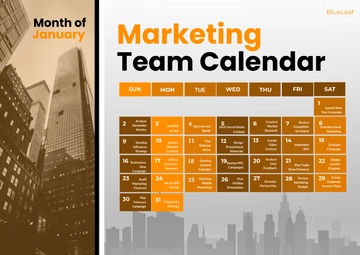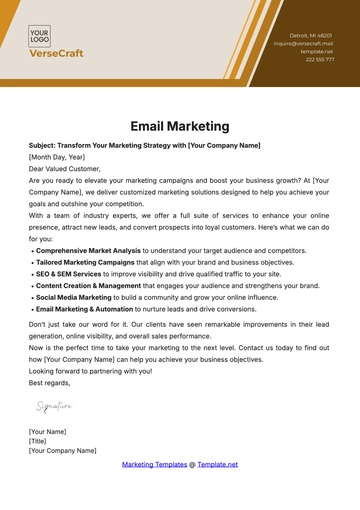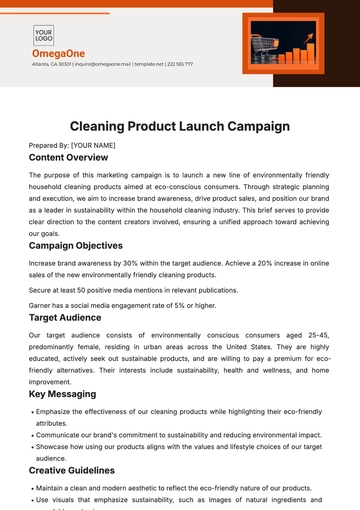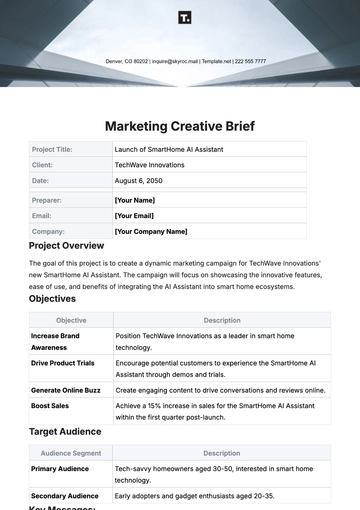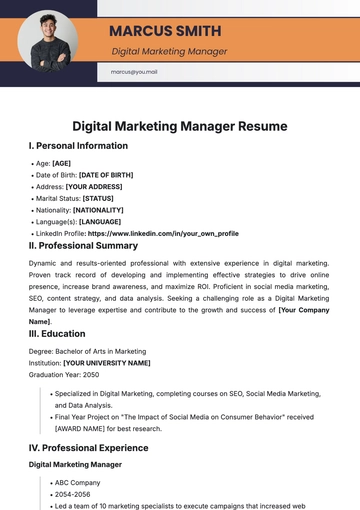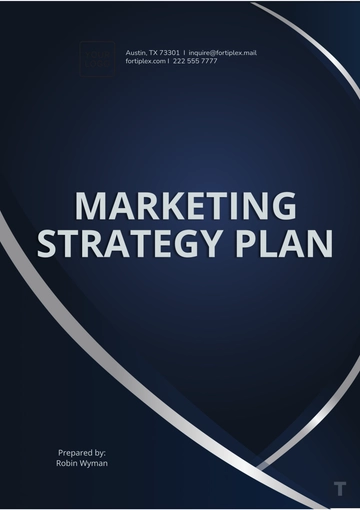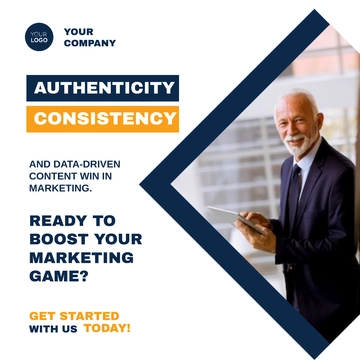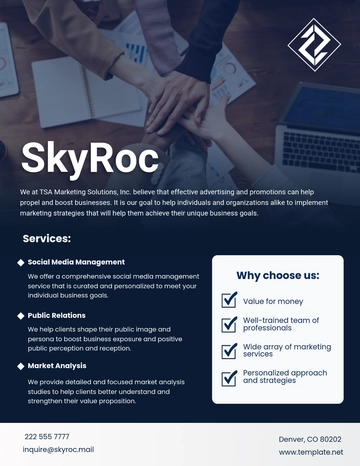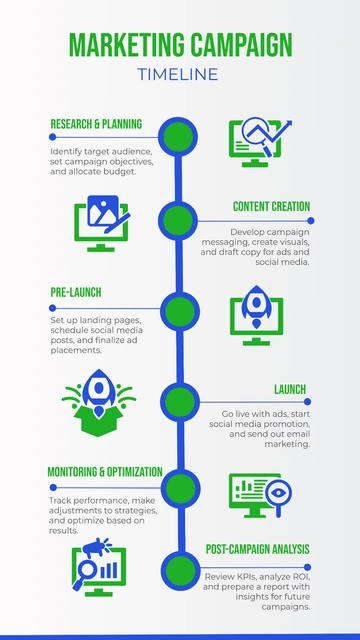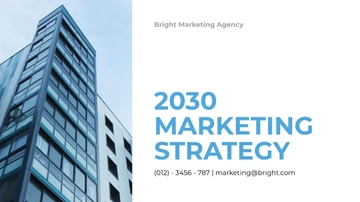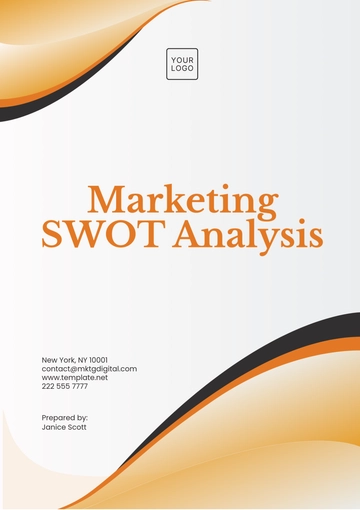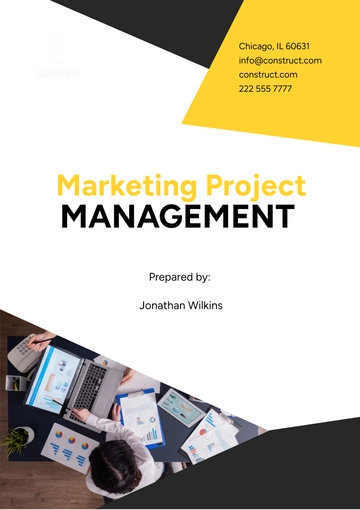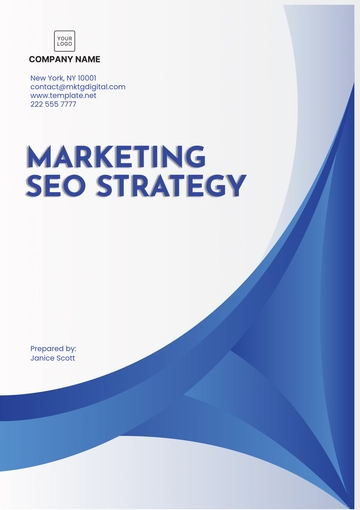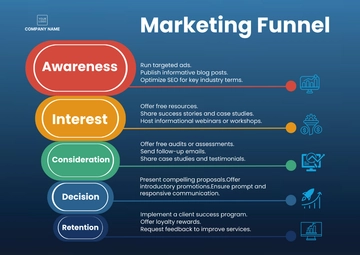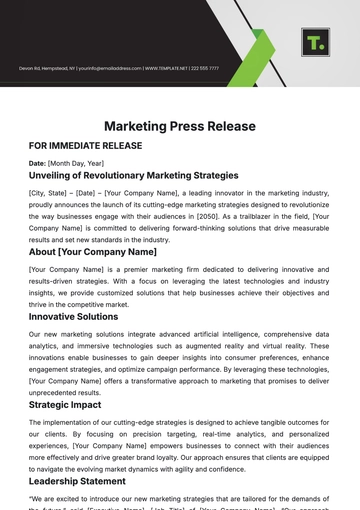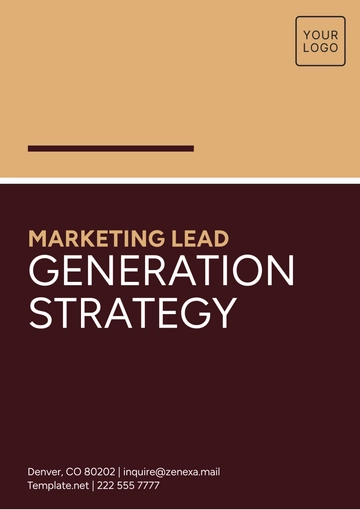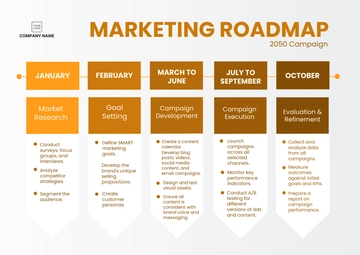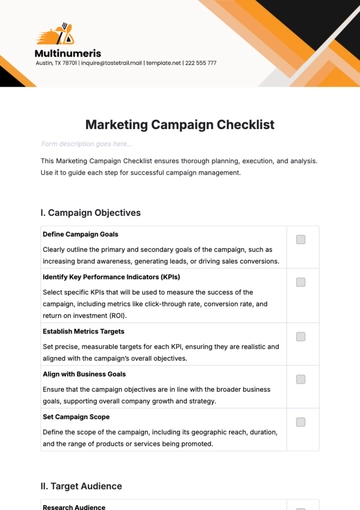Free Event Measurement and ROI Advertising Guide
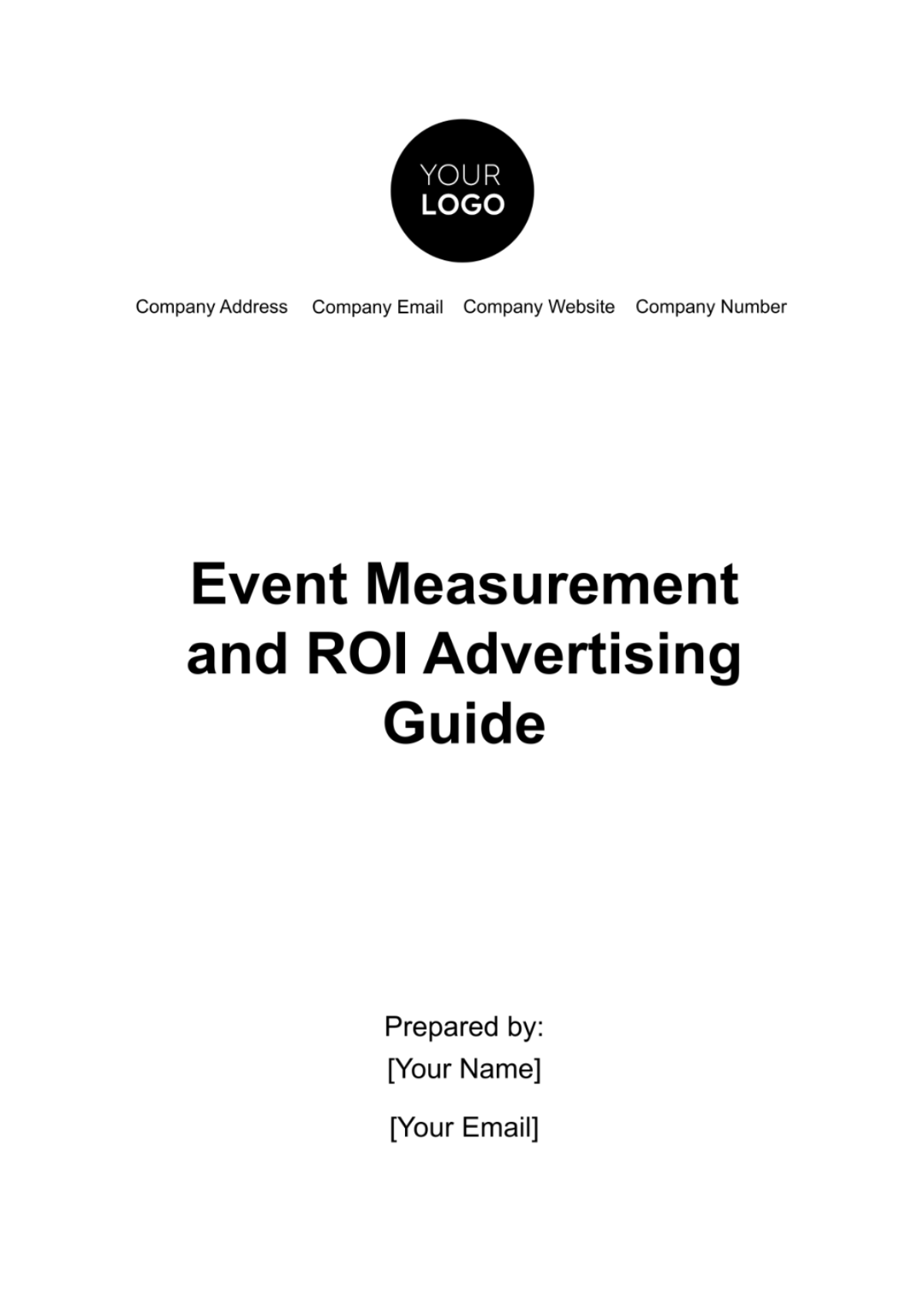
Introduction
The practice of measuring event success and calculating return on investment (ROI) is essential in advertising. This guide offers a structured approach to evaluate the effectiveness of events, ensuring they align with [Your Company Name]'s objectives.
Key Metrics for Event Measurement
This section details the primary metrics used to evaluate event success, essential for [Your Company Name] in strategizing and executing advertising events.
1. Attendance Metrics
To accurately gauge the scope and influence of the event:
Total Attendance: This metric quantifies the actual number of attendees present at the event. It serves as a fundamental indicator of the event's draw and popularity.
Registration vs. Attendance Rate: This vital metric evaluates the efficiency of converting registered interest into physical attendance. It offers insights into the effectiveness of the event's promotional strategies and attendee commitment.
Attendance Analysis:
This table is designed to provide a clear overview of attendance statistics. It compares the number of registered individuals against the actual attendees, offering a quantitative evaluation of the event's appeal and the success rate of converting registrations into attendance.
Metric | Description | Method of Calculation |
Total Registered | Total number of registrations | Count of registrations |
Total Attended | ||
Registration-Attendance Rate |
2. Engagement Metrics
This section aims to assess the extent and quality of attendee interactions during the event.
Average Session Time: This metric quantifies the duration of attendee engagement in various sessions. It is a crucial indicator of how captivating and relevant the sessions are to the attendees.
Interaction Rate: This metric gauges the degree of active participation by attendees. It reflects the effectiveness of the event in encouraging attendee involvement and interaction.
Engagement Analysis
This table provides a detailed breakdown of engagement metrics. This analysis is essential for understanding the effectiveness of session content and the overall interactive environment of the event.
Metric | Description | Measurement Method |
Average Session Time | Average time spent in a session | Time tracking through session app |
Interaction Rate | ||
Social Media Mentions |
3. Financial Metrics
The purpose of this section is to comprehensively evaluate the financial outcomes of the event.
Total Revenue: This metric represents the aggregate of all income streams generated by the event. It encompasses ticket sales, sponsorships, merchandise sales, and any other revenue sources. This figure is critical for understanding the overall financial success of the event.
Cost Per Attendee: This metric calculates the average expenditure incurred for each attendee. It serves as a key measure of financial efficiency, indicating how effectively the event's budget was utilized in relation to attendee turnout.
Financial Performance
This table presents a detailed summary of the event's financial metrics. It offers a clear perspective on the event's financial health and efficiency. This analysis is vital for making informed decisions about budget allocation and cost management in future events.
Metric | Description | Calculation Method |
Total Revenue | Total income from all sources | Sum of ticket sales, sponsorships, etc. |
Cost Per Attendee | ||
Net Revenue |
Methodology for Data Collection
The methodology outlined here is structured to accurately capture and analyze various dimensions of event data:
Attendance Data: This is acquired through a combination of digital check-ins and registration data. Utilizing advanced digital tracking systems, we ensure precise recording of attendee numbers.
Engagement Data: We collect this data through a dual approach: mobile app analytics for digital interactions and physical feedback forms for direct attendee responses. This method provides a comprehensive understanding of attendee engagement levels and overall satisfaction.
Financial Data: Financial transactions and metrics are meticulously tracked using sophisticated accounting software. This ensures a high level of accuracy in financial reporting and analysis.
Each data collection method is tailored to provide the most relevant and accurate information for its respective area, ensuring a holistic understanding of the event's performance across various critical metrics.
ROI Calculation
This section delineates the methodology for calculating the Return on Investment (ROI), a critical measure of the event's financial success:
Total Cost Calculation: This involves aggregating all event-related expenditures. It encompasses direct costs such as venue rental, staffing, marketing, and any ancillary expenses. Precise calculation of total cost is imperative for an accurate assessment of the financial investment into the event.
Net Revenue Calculation: This is derived by subtracting the Total Cost from the Total Revenue. The Total Revenue includes all income streams such as ticket sales, sponsorships, and merchandise sales. This calculation provides the net financial gain from the event.
ROI Analysis: This step quantitatively evaluates the financial success of the event, presenting it as a percentage. A higher ROI indicates greater financial efficiency and success of the event.
The methodology for ROI calculation is designed to give a clear and objective view of the financial performance of the event, guiding future financial planning and decision-making.
Strategies to Maximize ROI
In order to enhance the ROI of advertising events, it is essential to implement targeted strategies that address various aspects of the event lifecycle. Below, we detail these strategies with specific actions and expected outcomes.
1. Targeted Marketing
Demographic Analysis: Deeply analyze attendee demographics to tailor marketing messages.
Channel Optimization: Identify and focus on the most effective marketing channels based on past event data.
Targeted Marketing Strategies
Metric | Description | Calculation Method |
Customized Email Campaigns | Personalize emails based on attendee interests | Higher engagement and conversion rates |
Social Media Targeting | ||
Influencer Collaborations |
2. Sponsorship Engagement
Sponsor Matching: Match sponsors with event segments that align with their brand values.
Sponsorship Packages: Develop tiered sponsorship packages to attract a wide range of sponsors.
Sponsorship Engagement Strategies
Action Item | Description | Expected Outcome |
Branded Content Creation | Create content that incorporates sponsor branding | Increase sponsor visibility and value |
Exclusive Sponsorship Experiences | ||
Post-Event Reports for Sponsors |
3. Post-Event Engagement
Follow-Up Surveys: Send surveys to attendees to gather feedback and measure satisfaction.
Content Marketing: Share highlights, insights, and key learnings from the event.
Post-Event Engagement Strategies
Action Item | Description | Expected Outcome |
Email Follow-Ups with Attendees | Engage attendees with thank you emails and event highlights | Maintain attendee interest and loyalty |
Shareable Content Creation | ||
Exclusive Offers for Next Event |
4. Optimizing Pricing Strategies
This involves adjusting ticket prices based on demand, providing early bird specials, and offering tiered pricing for different levels of event access. Enhanced ticket sales through incentivized pricing, increased early registrations, and maximized revenue from diverse attendee segments.
Action Item | Description | Expected Outcome |
Early Bird Discounts | Offer discounts to early registrants | Boost early sales and secure initial cash flow |
Tiered Pricing Models | ||
Group Discounts |
5. Leveraging Technology
Using the latest event technologies can streamline event management processes, enhance attendee experience, and provide valuable data insights.
Action Item | Description | Expected Outcome |
Event Management Software | Implement software for efficient organization | Streamline planning and coordination |
Virtual Reality Experiences | Incorporate VR to extend the event's reach | Offer innovative experiences and attract tech-savvy attendees |
Real-Time Analytics | Use tools to analyze event data on-the-fly | Make immediate improvements and document insights |
6. Networking & Community Building
Cultivating a sense of community and facilitating networking opportunities can significantly increase the perceived value of an event. Stronger community ties, increased attendee loyalty, and a robust network that adds continuous value beyond the event itself.
Action Item | Description | Expected Outcome |
Structured Networking Sessions | Organize sessions dedicated to professional networking | Enhance attendee value and satisfaction |
Community Forums | ||
Alumni Discounts |
Conclusion
This guide offers a comprehensive framework for measuring and maximizing the ROI of advertising events. By integrating these methods and strategies, event organizers can not only gauge the success of their events but also find avenues to enhance their effectiveness and profitability in future endeavors.
- 100% Customizable, free editor
- Access 1 Million+ Templates, photo’s & graphics
- Download or share as a template
- Click and replace photos, graphics, text, backgrounds
- Resize, crop, AI write & more
- Access advanced editor
Introducing Template.net's Event Measurement and ROI Advertising Guide Template, an essential resource for businesses aiming to maximize their event marketing efforts. Fully customizable and editable in our Ai Editor Tool, this template empowers users to track event metrics and calculate return on investment with precision. Optimize advertising strategies and achieve greater success for your events with our user-friendly platform.
You may also like
- Marketing Google Slide
- Marketing Letter
- Marketing Quotation
- Marketing Report
- Marketing Strategic Plan
- Marketing Plan
- Marketing Proposal
- Marketing Flyer
- Marketing Presentation
- Real Estate Marketing Plan
- Marketing Contract
- Marketing Agreement
- Marketing Resume
- Marketing Checklist
- Marketing Brochure
- Marketing Banner
- Marketing Schedule
- Marketing Vector
- Marketing Logo
- Marketing Chart
- Marketing Campaign Plan
- Marketing Budget
- Marketing Postcard
- Marketing Poster
- Marketing Facebook Post
- Marketing Instagram Post
- Marketing Newsletter
- Marketing Infographic

